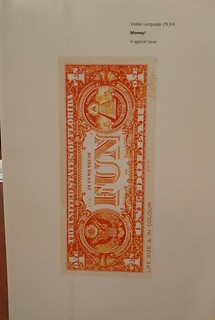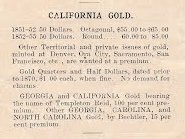
PREV ARTICLE
NEXT ARTICLE
FULL ISSUE
PREV FULL ISSUE
NOTES FROM E-SYLUM READERS: FEBRUARY 19, 2017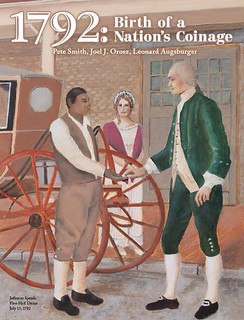
1792: Birth of a Nation's Coinage We've received word from Heritage that our new book 1792: Birth of a Nation's Coinage, has been printed. Final details about price and how to order will soon be forthcoming, but for now, we just wanted to let readers of The E-Sylum know that the book will soon be available for purchase. That's great news! This book will fill an important gap in American numismatic literature, covering in detail the transition from colonial to Federal coinage. -Editor
J.S.G. Boggs: Visible Language
Thanks. I have a copy of this in my library as well, purchased I believe from Boggs himself when he attended a coin show. His influences are far and wide, with collectors and
scholars the world over. Time will tell if his impact will fade or grow. He certainly made a mark in his moment. -Editor
To read the earlier E-Sylum article, see: California Fractional Gold After 1870
Bob Leonard writes: See California Pioneer Fractional Gold p39 for an explanation of the difference between charms and "genuine" small California gold--and it is not what he claims. Pieces without a denomination are charms (some are even marked charm," beginning in 1872, others advertised as such), though called "tokens" by modern collectors. In 1871 a maker of small California gold pieces was arrested and charged with violating the Act of June 8, 1864 prohibiting private coinage. Though prosecution was finally abandoned, they ceased production and other makers cut back in various ways, some issuing pieces with the denomination omitted. By 1883 no more denominated pieces were made (until the 20th century, but that is a different story). So no, pieces with a denomination are considered genuine, regardless of date, and those without are charms or tokens. Haquette is simply saying here that he does not care to stock pieces after 1870, not condemning later ones as charms. To read the earlier E-Sylum article, see: Ireland Charles I Coinage of the Lords Justices Last week Larry Korchnak asked if anyone could provide a copy of Lot 1185 from the September 2008 Stack's Coin Galleries sale. Dick Hanscom came through with this scan. Thanks,
from both Larry and myself. -Editor
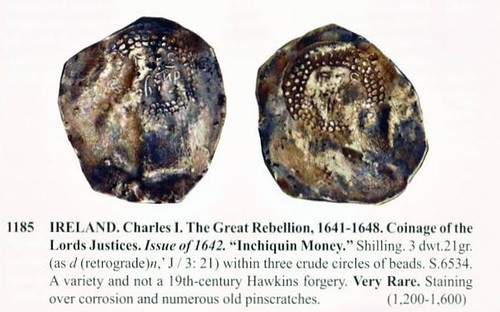 To read the earlier E-Sylum article, see: Numismatic Heaven: The National Numismatic Collection In the last issue there was an article about digitizing the "the National Numismatic Collection housed at the Smithsonian's National Museum of American History along with other legal tender such as bank notes, tax stamps and war bonds." A number of years ago I went to "numismatic heaven"...the vault housing the numismatic collection at The Smithsonian. As I remember, I held both the 1849 and 1933 Double Eagles in addition to so many other treasures. Off to the side of the "coin room" is another room. The one pictured in the article with the shelving and flat boxes. I wandered in, not knowing what was in this room. As I remember, the Bureau of Printing and Engraving had transferred their holding to the "coin vault". On the boxes were written the name of each state. I was not a paper money collector but how fascinating to open boxes and carefully look through sheet upon sheet of uncut currency designs. At the time I felt this was the highlight of my visit. It's exciting that this collection is being digitized! Heaven, indeed. I recall a similar visit many years ago where my group got to go to the vault and see the highlights of the U.S. collection, including both Gold Half Union patterns.
Amazing. -Editor
To read the earlier E-Sylum article, see: On Grading Services I have to disagree with you. "Caveat emptor" ought not to apply to professionally graded items; if it does, the grading services' services are worthless. Unfortunately, Kavan Ratnatunga's skepticism about slabbed and graded paper is well founded. Too often I have seen notes with parts of the design cut away that have been professionally graded as if they were intact. Such disregard does not generate confidence in the grading services, and does not serve our hobby well. A coin showing no wear would not be graded uncirculated if it were clipped, so why should a note be? So when buying paper, use your eyes. It's hard to disagree that a third party evaluation ought to be unassailable, and if large numbers of graded notes are found to have such problems, shame on them. Yet neither
would I expect a 0% mistake rate. What I'm not clear on is just what proportion of professionally graded notes might not deserve their ranking. While we tend to notice or hear about the problems,
the problem-free items go unnoticed. -Editor
David Gladfelter adds: They do a particularly poor job on colonial paper. For example, most surviving New Jersey bills of credit have multiple borders of typeset symbols – leaves, flowers, stars, zodiac symbols, etc. These occur particularly on the higher denominations where the borders are printed in color. Part of a border can be trimmed away, usually by a collector who can’t tolerate a ragged edge. Then the note is slabbed and, because the edge looks clean and straight, the note receives a high grade although it’s not complete. I haven’t kept count but see this often enough that I have to attribute it to willful ignorance on the part of the “experts.” Yes, shame on them! And woe to the hapless buyer who fails to notice, or just doesn’t know. Here's an example where the grading service got it right. Notice that the outer red border is complete on all four sides. (There’s also an inner black border). Compare the Ford specimen (3:706, plated). A collector (probably not Ford) has trimmed this specimen – the edges are neat, but the right red border is completely gone and only a trace of the left red border remains. (This bill was sold raw; only the left border trim was noted by the cataloger.) To be fair to the grading services, while Newman’s and other catalogs of colonial paper do list every denomination of every issue, I’m not aware of any that illustrates every denomination of every issue. You need a set of auction catalogs for that. So to be fair, if they don’t have a standard to refer to, it may be difficult to determine whether a particular bill is complete or not. 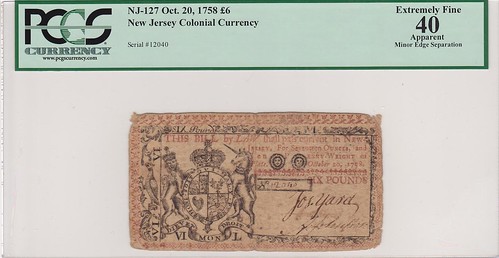 To read the earlier E-Sylum article, see: One-Cent Checks Your report on why people write checks got me motivated to ask why Banks write checks. I have an overdraft account associated with my HSBC account in the USA. With my HSBC account in Sri Lanka, the credit balance just goes negative. In USA it is a separate account from which funds transfer when needed, and I have to transfer funds back into the overdraft account to balance it. I generally add few cents more in case they debit interest. However, for unknown reasons the Bank does not like me to have a credit balance in my overdraft account, and after a few months wants to get rid of it. But rather than transfer it back to current account writes and posts me a check. And in the case below for one cent. I wonder how much it cost to generate and post me that check. I could not dream of depositing such a collectible into my account. I would much appreciate an explanation from a US banker. 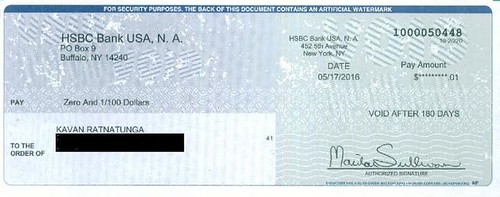 Allowing a negative balance makes perfect sense to me, but banks would rather generate fees. As for sending one cent checks, I wouldn't be surprised to learn that it's a
government regulation to return overages to account holders regardless of the amount. -Editor
To read the earlier E-Sylum article, see: 2017 ANS Gala Photo Caption 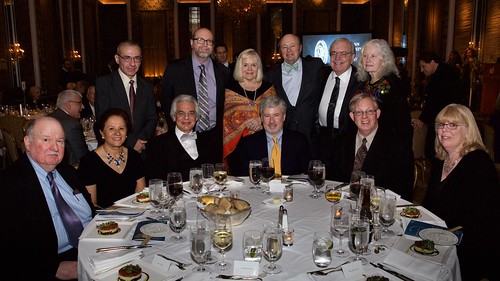 Catherine DiTuri of the American Numismatic Society helped me with the caption for this photo at my table at last month's ANS Gala: L-R, standing: Lev Tsitrin, David Fanning, Regina and John Adams, Warren and Cathette Plumer Seated – Frank and Rosie Campbell, John Lupia, John Sallay, Wayne and Dee Homren Thanks! I hadn't caught everyone's name. Warren - please email me. -Editor
To read the earlier E-Sylum article, see: THE BOOK BAZARREWayne Homren, Editor The Numismatic Bibliomania Society is a non-profit organization promoting numismatic literature. See our web site at coinbooks.org. To submit items for publication in The E-Sylum, write to the Editor at this address: whomren@gmail.com To subscribe go to: https://my.binhost.com/lists/listinfo/esylum All Rights Reserved. NBS Home Page Contact the NBS webmaster 
|
